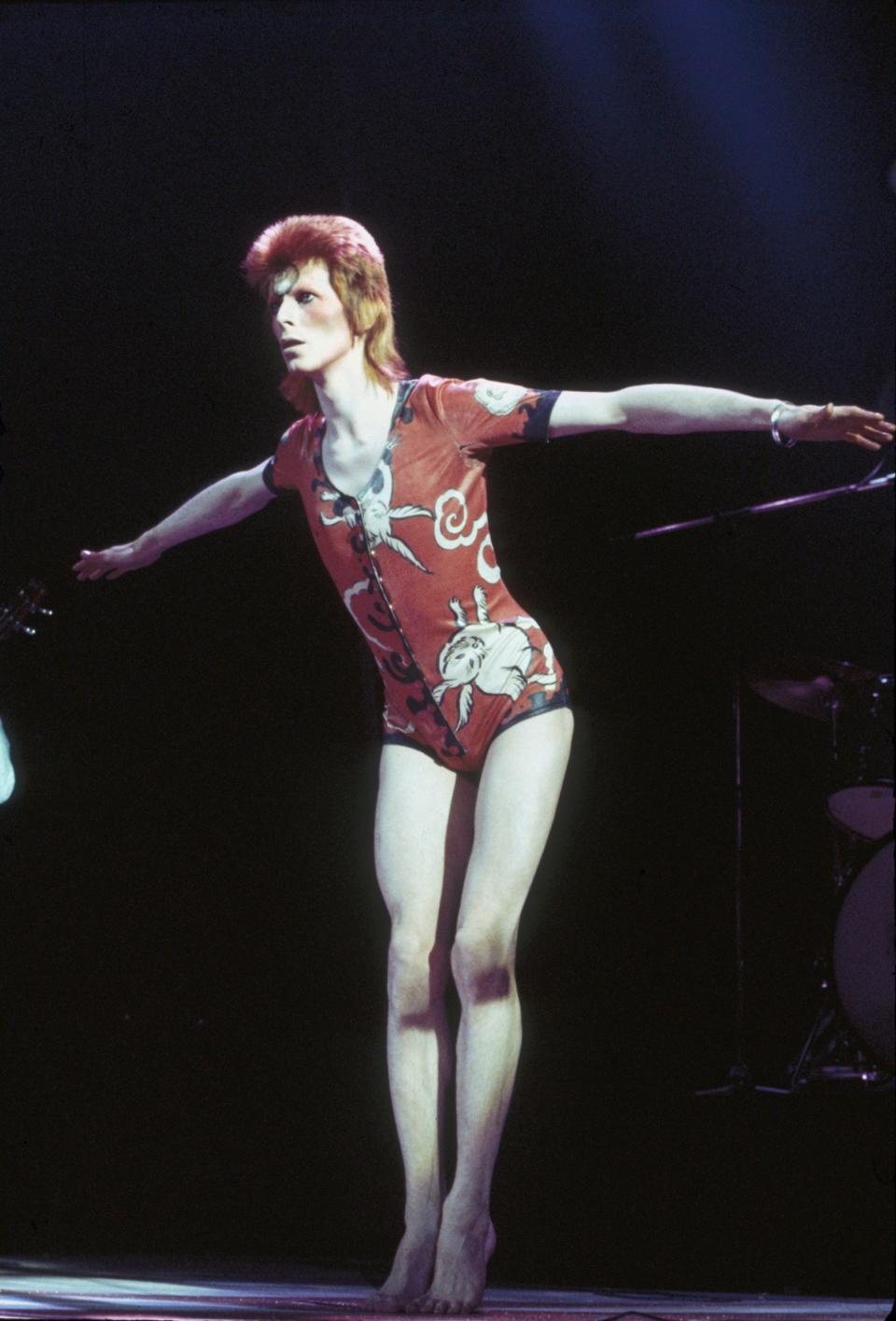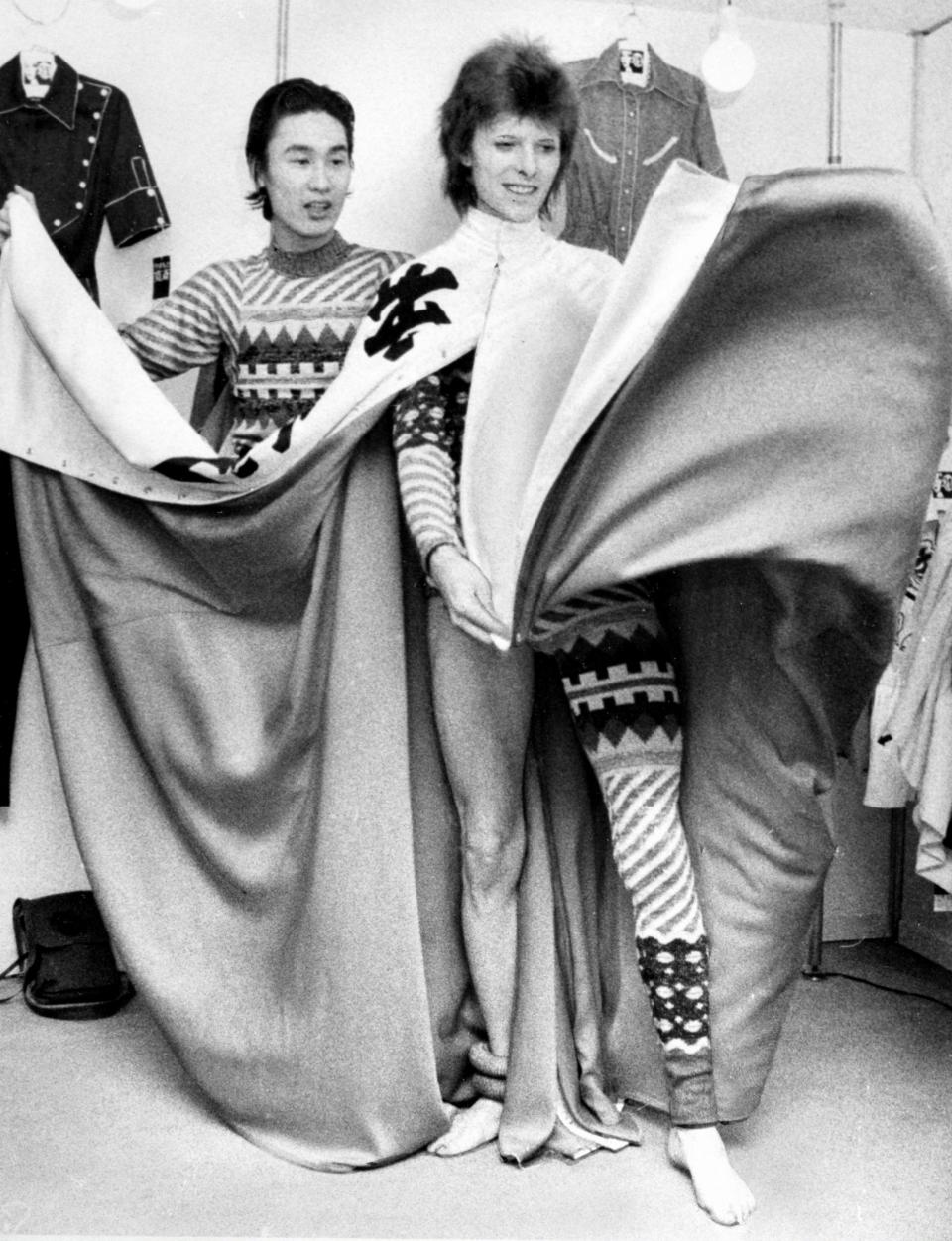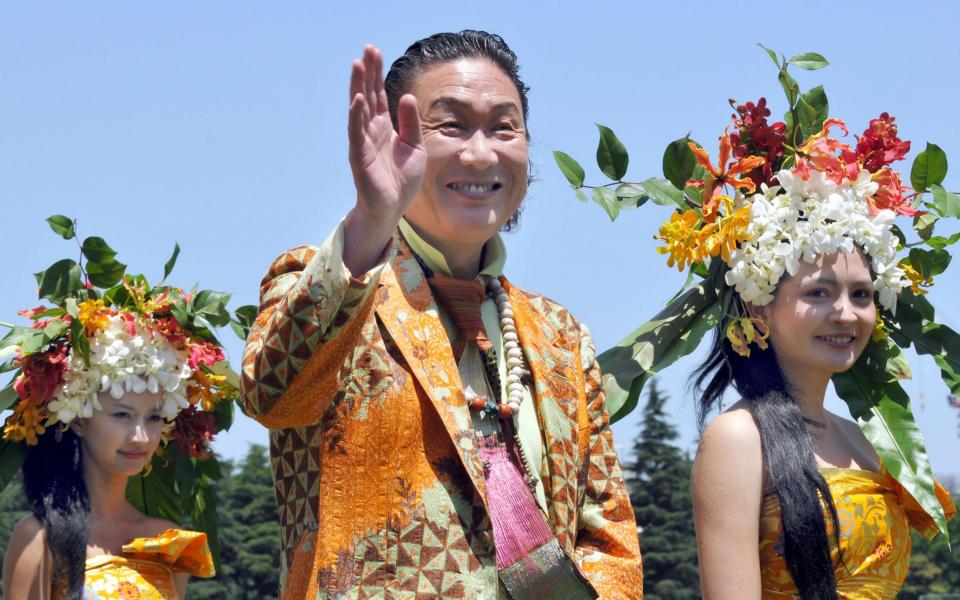Kansai Yamamoto, designer who shaped the look of David Bowie’s Ziggy Stardust persona – obituary

Kansai Yamamoto, who has died aged 76, was a fashion designer who shot to fame when he supplied David Bowie with the costumes that defined the singer’s Ziggy Stardust and Aladdin Sane eras; his audacious designs were a riot of clashing colours and motifs, drawing on the visual themes of his native Japan, and among the designers he influenced were Jean-Paul Gaultier and Alexander McQueen.
He was inspired by the Japanese concept of basara – an aesthetic of wild maximalism, or as one academic put it, “transgressive excess”, and the polar opposite of the concept of wabi-sabi, underplayed and modest. In 1971 he became one of the first Japanese designers to show at London Fashion Week. Harpers & Queen described it as “the Show of the Year … a spectacular coup de theatre”.

Japanese culture was one of the most potent influences on Bowie: “It’s not infrequent that I wake up on a chilly morning and wish that I were in Kyoto or somewhere, in a Zen monastery,” he would tell the NME in 1980. And as he was in the throes of creating Ziggy Stardust, the persona that would make his name around the world, he bought several Yamamoto pieces on the King’s Road.
In the 1960s Bowie had studied dance with his mentor, Lindsay Kemp, the mime artist who was influenced by the elaborate and exaggerated kabuki style of theatre. Bowie shared his passion, as did Yamamoto, and when the singer took his Ziggy tour to the US, Yamamoto flew to New York, going straight from the airport to a front seat at Radio City Music Hall – to see Bowie take the stage in one of his outfits, to a standing ovation. “Some sort of chemical reaction took place,” he recalled.
One of his most memorable outfits was “Space Samurai”, which adapted the hakama, a type of loose trouser worn by samurai and present-day martial artists, in black, red and blue. Another favourite was the “woodland creatures” jumpsuit, a legless number in red leather with hand-painted black edges and cream-coloured rabbits.

The designer’s influence encompassed more than clothes: in 2000 Bowie recalled that Yamamoto was “100 per cent responsible for the Ziggy haircut and colour”.
For Ziggy’s farewell tour in 1973, Bowie wore a one-legged, knitted bodysuit by Yamamoto. And when he put Ziggy out to pasture in favour of Aladdin Sane, Yamamoto was on hand: his outfits included an outrageously short kimono and a cape covered in Japanese kanji writing.
His own favourite Bowie piece was the “Tokyo Pop”, a patent leather jumpsuit in black and white, with billowing, bowed legs that unsnapped along the sides for quick changes.
Bowie was keen to exploit the technique of hikinuki, where a costume is stripped off to reveal another underneath. When he toured Japan, he and Yamamoto had dinner with the great kabuki actor Bando Tamasaburo – an onnagata, or a man playing female roles.

“I approached Bowie’s clothes as if I was designing for a female,” he said. “My clothes became part of David, his songs and his music. They became part of the message he delivered to the world.”
Kansai Nobuyoshi Iseya Yamamoto – no relation to his fellow designer Yohji Yamamoto – was born on February 8 1944 in Yokohama; his father was a tailor. His childhood was not happy, however: his parents divorced when he was seven and he was sent to a children’s home. “How much I envied the lights of happy families that I saw from the window of the slow train at dusk,” he recalled. “It was lonely, and I still can’t forget that.”
He later lived with his father in Tokyo, helping him out with sewing duties. He first began a civil engineering course, but changed to study English at Nippon University.
He dropped out of that course, too, to concentrate on fashion following a trip to Papua New Guinea in which he became obsessed with the riotous colours of the birdlife there. He was going to devote himself, he decided, to designing clothes as beautiful and striking as their plumage.
He served his time as apprentice to the designers Junko Koshino and Hisashi Hosono and in 1967 he won the Soen Prize. He set up his own fashion house in 1971, and the following year he hit London.
Yamamoto made his Paris debut in 1974, and although it was a flop which bankrupted him, he opened his Kansai Boutique in the city in 1977, and for the rest of the decade and into the 1980s, he was in his global pomp, the over-the-top flamboyance of his attire in marked contrast to the diffident minimalism of his compatriot designers.

But as fashion developed a grungier feel he was left behind, and his final collection was for the autumn/winter of 1992, after which for some years his fashion activities were largely restricted to licensing products.
He moved into putting one what he called “Super Shows”, fusions of music, dance, acrobatics and traditional Japanese festivals. The first, at Red Square in Moscow, attracted an audience of 120,000, and he subsequently took his extravaganzas around the world, to locations including New Delhi and Vietnam; one included a lifesize inflatable whale.
He had a show planned with Bowie in which the singer would serenade the crowd from a hot-air balloon, but Bowie’s death in 2016 scotched his plans. “To have Bowie sit atop those air balloons, and have him sing his songs, was my dream,” he said in 2018.
Yamamoto returned to designing, and in 1999 he created a modern version of the kimono, then in 2003 he devised a 25-piece wardrobe for Elton John’s Greatest Hits world tour; GQ magazine described it as “rock’n’roll meets Mozart”.

Lady Gaga – for whom he was a “genius” – and Stevie Wonder were other devotees of the Yamamoto look, and he also designed venues and social events for the 2008 G8 summit in Tokyo, as well as the Skyliner train that connects Narita Airport with central Tokyo.
The David Bowie Is exhibition at the Victoria and Albert Museum in London in 2013 showcased the Yamamoto aesthetic, and to accompany it there was a live show, Fashion in Motion: Kansai Yamamoto.
He worked with the designer Nicolas Ghesquière for Louis Vuitton’s Japanese-inspired Resort 2018 collection, and had what he described as a “super-energy” show due on July 31. His team said it would go ahead.
Kansai Yamamoto is survived by two daughters.
Kansai Yamamoto, born February 8 1944, died July 21 2020

 Yahoo News
Yahoo News 